Republic of Somalia located in the Horn of Africa: Educational Segment : Somali 101 class
Somalia is a country that has experienced excessive amounts of political instability during the past decade. Somalia is a nation that has been shaped by numerous events that range from its early colonization to the external events of the Cold War. Republic of Somalia and formerly known as the Somali Democratic Republic under army rule, is a country located in the Horn of Africa. It is bordered by Djibouti to the northwest, Kenya to the southwest, the Gulf of Aden with Yemen to the north, the Indian Ocean to the east, and Ethiopia to the west.
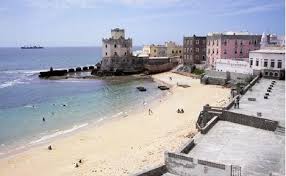
With the longest coastline on the continent its terrain consists mainly of plateaus, plains and highlands. The Transitional Federal Government (TFG) is the current internationally recognized federal government of Somalia. It was established as one of the Transitional Federal Institutions (TFIs) of government as defined in the Transitional Federal Charter (TFC) adopted in November 2004 by the Transitional Federal Parliament (TFP). The Charter outlines a five-year mandate leading toward the establishment of a new constitution and a transition to a representative government after national elections. The TFG is the most recent attempt to restore national institutions to Somalia after the 1991 collapse of the Siad Barre Government and the ensuing Somali Civil War. Piracy off the Somali coast has been a threat to international shipping since the second phase of the Somali Civil War in the early 21st centurySince 2005, many international organizations, including the International Maritime Organization and the World Food Programme, have expressed concern over the rise in acts of piracy. Piracy has contributed to an increase in shipping costs and impeded the delivery of food aid shipments.
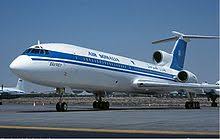
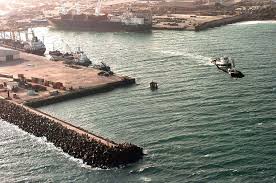
Ninety percent of the World Food Programme’s shipments arrive by sea, and ships into this area now require a military escort. The country gained Independence on July 1, 1960 (from a merger between the former Somaliland Protectorate under British rule, which became independent from the U.K. on June 26, 1960, and Italian Somaliland, which became independent from the Italian-administered UN trusteeship on July 1, 1960, to form the Somali Republic). Following Somalia’s independence in 1960 the government supported the idea of Pan-Somalism, which is the belief that Somalia should unite all Somali-inhabited territories.
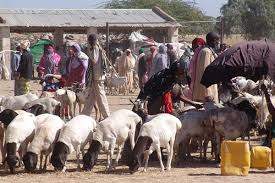
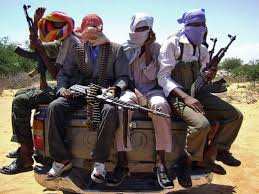
The goal of Somali unification led to a military buildup that eventually resulted in war with Ethiopia and fighting in northern Kenya. The battle for Somali regions led to a shift in the political ideology and interactions with other nations. Somalia, which prior to 1963, had been allied with Western nations shifted their geopolitical alliances to the Eastern powers. The Transitional National Government (TNG) emerged out of a peace conference of Somali clan leaders in Djibouti in 2000. At the conference Abdulkassim Salat Hassan was elected President and subsequently Hassan Abshir Farah was named Prime Minister. Since few warlords have decided to recognize the government, this leaves Somalia without a powerful central government. A proposal that suggested widening the TNG to include opposition warlords in the national unity cabinet received little backing in December 2001. The TNG controls only parts of the Somali capital, Mogadishu, and pockets elsewhere in Somalia. The Somali Reconstruction and Restoration Council (SRRC) represents the main challenge to the TNG.

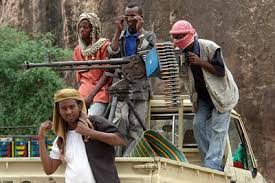
In 2006, the Islamic Courts Union (ICU), an Islamist organization, assumed control of much of the southern part of the country and promptly imposed Shari’a law. The Transitional Federal Government sought to reestablish its authority, and, with the assistance of Ethiopian troops, African Union peacekeepers and air support by the United States, managed to drive out the rival ICU and solidify its rule While it still has room for improvement, the interim government continues to reach out to both Somali and international stakeholders to help grow the administrative capacity of the Transitional Federal Institutions and to work toward eventual national elections in 2011Current President Sharif Ahmed is the head of the Coalition Governemnet
Following this defeat, the Islamic Courts Union splintered into several different factions. Some of the more radical elements, including Al-Shabaab, regrouped to continue their insurgency against the TFG and oppose the Ethiopian military’s presence in Somalia. According to the CIA and the Central Bank of Somalia, despite experiencing civil unrest, Somalia has maintained a healthy informal economy, based mainly on livestock, remittance/money transfertelecommunications. Due to a dearth of formal government statistics and the recent civil war, it is difficult to gauge the size or growth of the economy. For 1994, the CIA estimated the GDP at $3.3 billionIn 2001, it was estimated to be $4.1 billion. By 2009, the CIA estimated that the GDP had grown to $5.731 billion, with a projected real growth rate of 2.6%.According to a 2007 British Chambers of Commerce report, the private sector also grew, particularly in the service sector. Unlike the pre-civil war period when most services and the industrial sector were government-run, there has been substantial, albeit unmeasured, private investment in commercial activities; this has been largely financed by the Somali diaspora, and includes trade and marketing, money transfer services, transportation, communications, fishery equipment, airlines, telecommunications, education, health, construction and hotels. As with neighboring countries, Somalia’s economy consists of both traditional and modern production, with a gradual shift in favor of modern industrial techniques taking root. According to the Central Bank of Somalia, about 80% of the population are nomadic or semi-nomadic pastoralists, who keep goats, sheep, camels and cattle. The nomads also gather resins and gums to supplement their income. companies and
Agriculture is the most important economic sector. It accounts for about 65% of the GDP and employs 65% of the workforce. Livestock contributes about 40% to GDP and more than 50% of export earnings. Other principal exports include fish, charcoal and bananas; sugar, sorghum and corn are products for the domestic market With the advantage of being located near the Arabian Peninsula, Somali traders have increasingly begun to challenge Australia‘s traditional dominance over the Gulf Arab livestock and meat market, offering quality animals at very low prices. In response, Gulf Arab states have started to make strategic investments in the country, with Saudi Arabia building livestock export infrastructure and the United Arab Emirates purchasing large farmlands. Somalia is also a major world supplier of frankincense and myrrh. Cellular phone service is readily available throughout the country, but landline communication systems have been destroyed or dismantled. Somalia is linked to the outside world via ship-to-shore communications (INMARSAT) as well as links to overseas satellite operators by private telecommunications operators (including cellular telephone systems) in major towns.
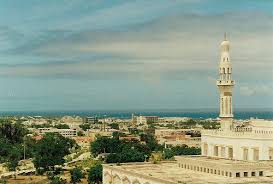
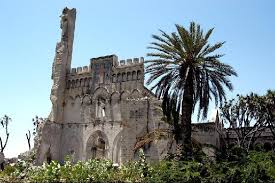
The modest industrial sector, based on the processing of agricultural products, accounts for 10% of Somalia’s GDP. Up to 14 private airline firms operating 62 aircraft now also offer commercial flights to international locations, including Daallo Airlines. With competitively priced flight tickets, these companies have helped buttress Somalia’s bustling trade networks. The World Bank reports that electricity is now in large part supplied by local businesses, using generators purchased abroad. By dividing Somalia’s cities into specific quarters, the private sector has found a manageable method of providing cities with electricity. A customer is given a menu of choices for electricity tailored to his or her needs, such as evenings only, daytime only, 24 hour-supply or charge per lightbulb.
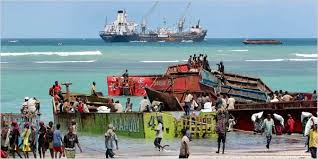
Somalia has untapped reserves of numerous natural resources, including uranium, iron ore, tin, gypsum, bauxite, copper, salt and natural gas. Due to its proximity to the oil-rich Gulf Arab states such as Saudi Arabia and Yemen, the nation is also believed to contain substantial unexploited reserves of oil. In mid-2010, Somalia’s business community also pledged to invest $1 billion in the national gas and electricity industries over the following five years.
A new police force was also formed to maintain law and order, with the first police academy to be built in Somalia for several years opening on December 20, 2005 at Armo, 100 kilometers south of Bosaso, the commercial capital of the northeastern Puntland region. Additionally, construction began in May 2010 on a new naval base in the town of Bandar Siyada, located 25 km west of Bosaso. The new naval base is funded by the Puntland administration in conjunction with Saracen International, a UK-based security company. Somalia’s new coalition government has enacted numerous political reforms since taking office in 2009, with an emphasis on transparency and accountability. One of its first changes involved ensuring that all government institutions, which had previously been spread out in various areas throughout the country, were now based in Mogadishu, the nation’s capital. The Central Bank of Somalia was also re-established, and a national plan as well as an effective anti-corruption commission were put into place Somalia has the longest coastline on the continent, with a seaboard that stretches 3,025 kilometers. Its terrain consists mainly of plateaus, plains and highlands. The nation has a total area of 637,657 square kilometres Comparing the 2000–2005 period with the half-decade just prior to the outbreak of the conflict (1985–1990), life expectancy actually increased from 46 to 48.5 years; Somalia has one of the lowest HIV infection rates on the continent With very few exceptions, Somalis are entirely Muslims,[ the majority belonging to the Sunni branch of Islam and the Shafi`i school of Islamic jurisprudence, although some are also adherents of the Shia Muslim denomination The cuisine of Somalia varies from region to region and consists of an exotic mixture of diverse culinary influences. It is the product of Somalia’s rich tradition of trade and commerce. Despite the variety, there remains one thing that unites the various regional cuisines: all food is served halal. There are therefore no pork dishes, alcohol is not served, nothing that died on its own is eaten, and no blood is incorporated. Qaddo or lunch is often elaborate. Somalia has a significant number of ethnic and economic minority groups. People of Bantu descent tend to live in farming villages and in the southern part of the country. Individuals of Arab descent and other non-African immigrants tend to reside in the coastal cities, such as Mogadishu. Among Somalis, a primary division exists between the Samaale and the Sab.The Somali language is the official language of Somalia Somalia’s political situation is an ideal example of the hardships and disunity that many African nations have encountered in the post-colonialist era. Since its independence in 1960, Somalia has encountered political, economic, and cultural instability. Somalia, like many other African nations, was controlled by a dictator under an authoritarian regime. Somalia is culturally and ethnically different from the majority of African nations. Prior to the civil war that erupted a decade ago, Somalia appeared to be one of the most homogeneous countries in Africa. Somalia is entrenched in the political developmental process and has a long way to go before it can be deemed democratically successful
No comments:
Post a Comment